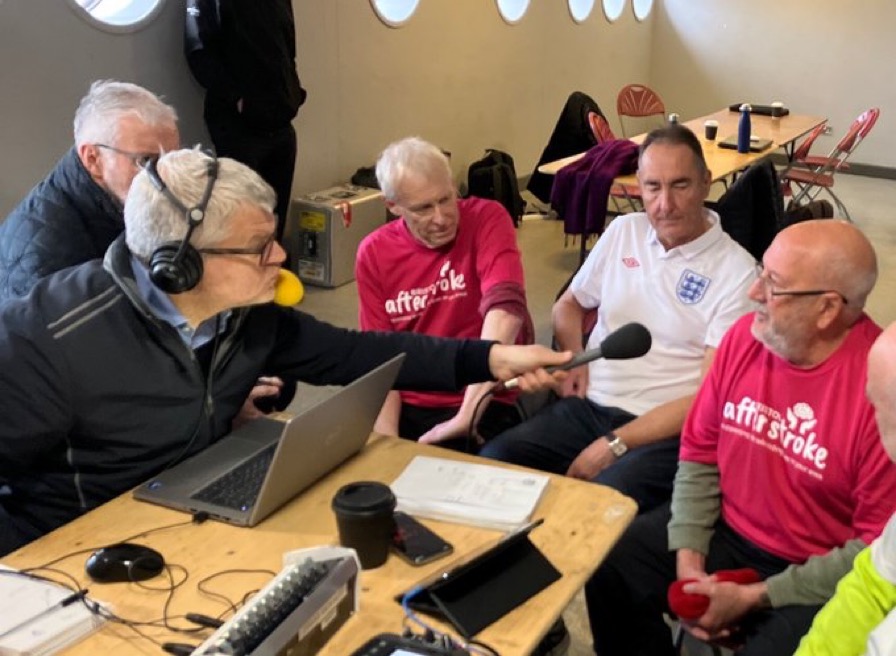Adrian Chiles on World Cup drinking in moderation with ACUK

With England’s next big game approaching this Sunday, charity Alcohol Change UK is encouraging anyone watching the game not to let excess alcohol ruin the result for them.
Thousands of fans will be watching England and Wales at pubs and other venues around the country, as well as at home. Alcohol Change UK, the charity behind Dry January®, is offering a few tips and tricks to help everyone enjoy the game.
The charity has teamed up with two well-known football personalities to help fans enjoy the football without a hangover.
Broadcaster and sports personality Adrian Chiles said:
“As a football fan who used to spend his Saturdays drinking heavily around matches, I completely understand the urge and pressure to drink at these times – the bigger the game the bigger the urge! And the World Cup can feel like the biggest of all. Now, I drink much less if at all and find it detracts not a jot from my enjoyment (or the misery) of the game. There are plenty of ways to cut down without stopping completely. Here are some tips for moderating your drinking through the World Cup and beyond:
“Decide before you go out whether you are going to drink or not that evening, and, if you are going to drink, decide by how much and stick to it. Or make your first two drinks non-alcoholic and then go from there and drink what you like. I suspect you’ll be enjoying yourself without the benefit of alcohol so might end up not bothering.
“Use an app to track how much you are drinking. Don’t judge yourself; don’t over worry about getting your unit count exactly bang on. It’s good to know where you are with it, and then perhaps consider all the drinks you’ve drunk watching the match and ask yourself if you really wanted, needed or enjoyed every one of them. If you did, no problem. If you didn’t, then bear that in mind next time. Often, I look at my tally for the evening and think I really get no benefit from half the drinks I had. Sometimes I conclude that I really loved everyone. But what I NEVER say is, “Do you know what? I really wish I’d drunk more last night.
“Any reduction in our drinking is positive and taking gradual steps forward to reduce it over time will make a difference. That could mean drinking on less days each week or reducing how much you drink in a single session. If you can’t get down to the recommended 14 units a week, that’s not a reason to give up on the whole idea of drinking less. Even going from 50 units down to 40 will mean you’re reducing your risk of harm. Moderation doesn’t have a start and an end, it’s an ongoing process, so don’t beat yourself up if you slip up.
“Don’t pressure others to drink. And don’t be pressured yourself. Either way, it’s a nonsense. Alcohol is the only drug you have to apologise for not taking. Peer pressure can be hugely influential, particularly around sporting events. If you or others around you aren’t drinking, ask them to support your choice and do the same for your friends and family.”
Ex-professional footballer Fraser Franks adds:
“Big sporting events like this, coupled with the festive season, can cause some of us to feel a huge amount of pressure to drink more than we’d really like. But drinking more heavily and regularly can put us at real risk of harming our physical and mental health, as well as our relationships.
“If you find yourself having more than you feel comfortable with this World Cup, consider making a change. That’s where Dry January might help. Being alcohol-free for 31 days could be the key to showing you that you don’t need alcohol to have fun, to relax, to socialise.
“Dry January also offers a ready-made response to anyone who tries to pressure you to drink. You can also learn new ways to keep on top of your drinking, while getting a huge amount of health benefits along the way.”
With the World Cup followed by Christmas and New Year, we know lots of fans will have found their drinking creeping up. Why not consider taking part in Dry January® and look towards a healthier 2023?
Dry January® is about resetting your relationship with alcohol and after potentially months of drinking more, it could be an important goal to set for the new year. The month-long challenge of Dry January officially starts on 1 January 2023.






